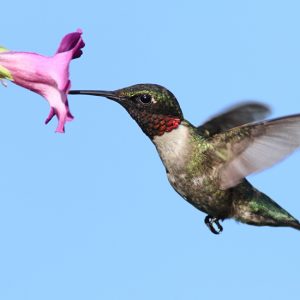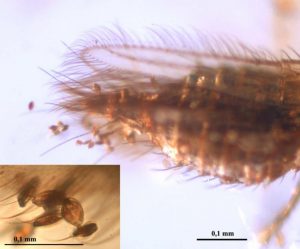The hummingbirds flew in about a month ago. I had their sugar water ready and waiting. The tiny birds seek sugar-rich nectar from plants but they will supplement with my feeder to support their extraordinary metabolisms. “The average man burns about 3,500 calories a day. If the daily output of a hummingbird were calculated for a 170-pound man, he would need to burn about 155,000 calories.” link
 Eating voraciously, they facilitate the grand romance of flowering plants or angiosperms. Angiosperms made a major breakthrough about 100 million years ago. The breakthrough using pollinators to fertilize eggs in one plant with sperm in another. link
Eating voraciously, they facilitate the grand romance of flowering plants or angiosperms. Angiosperms made a major breakthrough about 100 million years ago. The breakthrough using pollinators to fertilize eggs in one plant with sperm in another. link
About five years ago, scientists in Spain discovered pollen from what was believed to be an ancient Ginkgo tree locked in amber. Thrips were seen harvesting pollen grain.

Ginkgo trees are either male or female and the marvelous delivery by thrips of the pollen cones of the male trees to the ovaries of the female trees began a journey of –well, sexual interchange between plants by pollinators. link As the years went on this reproductive strategy was wildly successful. There are more flowering plants on earth than anything other than insects.
But plants have to attract pollinators and they do so in different ways for bees, bats, butterflies and, of course, hummingbirds.
Perhaps 7000 species of plants now depend on about 361 species of hummingbirds for pollination. Plants that depend upon hummingbirds for pollination have ‘pro-bird’ and ‘anti-bee’ traits. For example, hummingbirds do not need scent while insects do. Their vision is excellent, so hummingbird flowers are most often unscented but bright in color.
Hummingbird flowers are deep, the hummingbird’s tongue and bill are perfectly adapted. The bill is sharp and can slash a flower open if necessary for nectar. The little bird’s tongue extends beyond the bill, the front part split with curled outer edges that work like a straw. link
There are dozens of amazing hummingbird facts: they can fly 60 miles and hour; their hearts beat as high as 1,260 beats per minute; a wing modification permits them to fly forward, backward, up and down (no other bird can do this). link
If you don’t want the trouble of a feeder, good plants to attract these amazing creatures include: trumpet honeysuckle (Lonicera sempervirens), scarlet beebalm (Monarda didyma), lemon beebalm (Monarda citriodora), wild bergamont (Monarda fisulosa), cardinal flower (Lobelia cardinalis), trumpet creeper (Campsis radicans), columbine (Aquilegia canadensis) and any of the salvias. link
I am not sure it would not have been easier for plants to devise some ambulatory system to reproduce, like animals. It seems so complicated to produce a specific flower for a specific pollinator. Perhaps this ancient system is superior. It would be odd to see trees and bushes wandering around, going to sports bars, using online dating services.